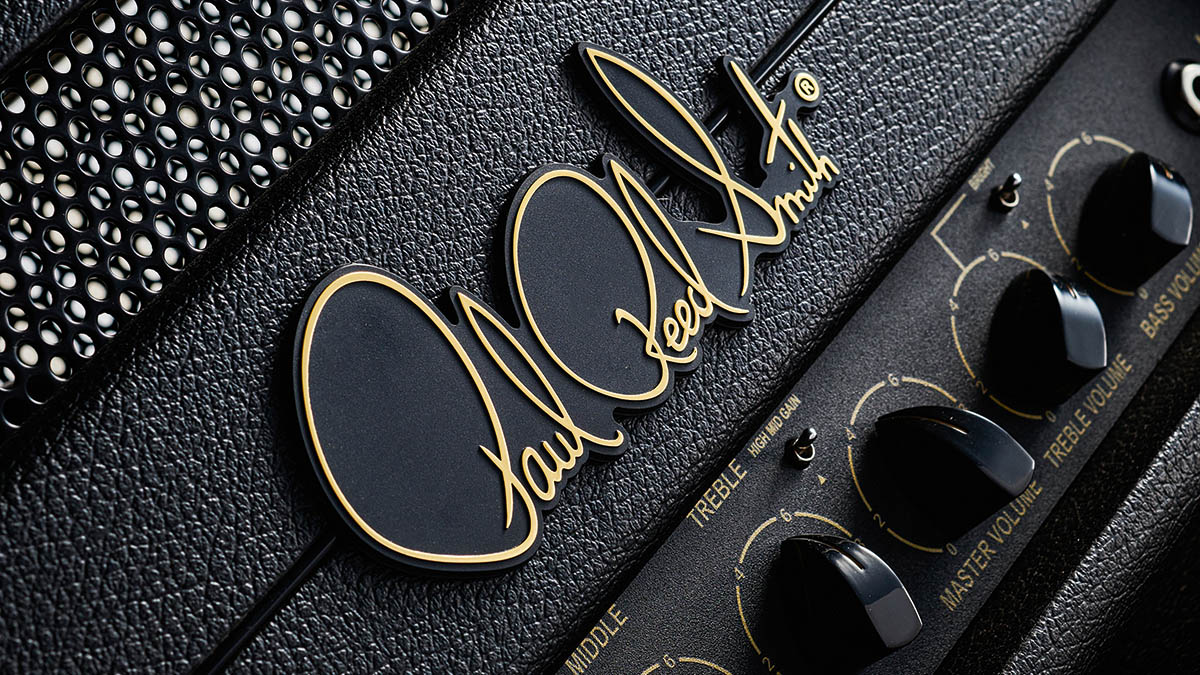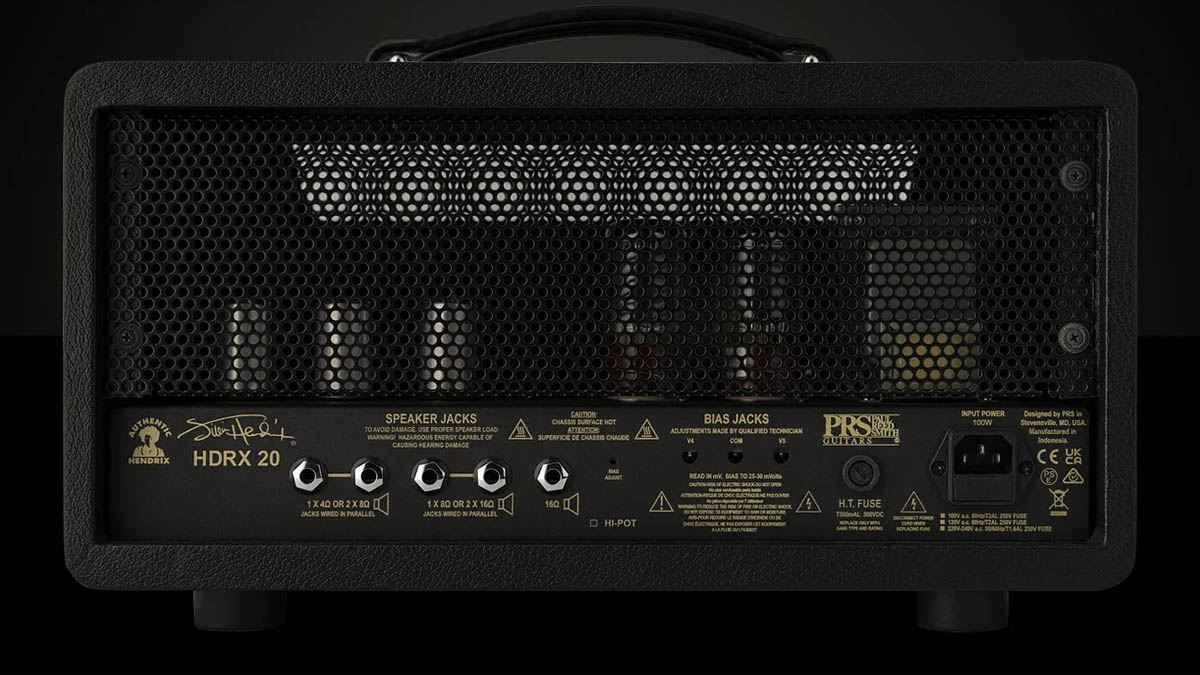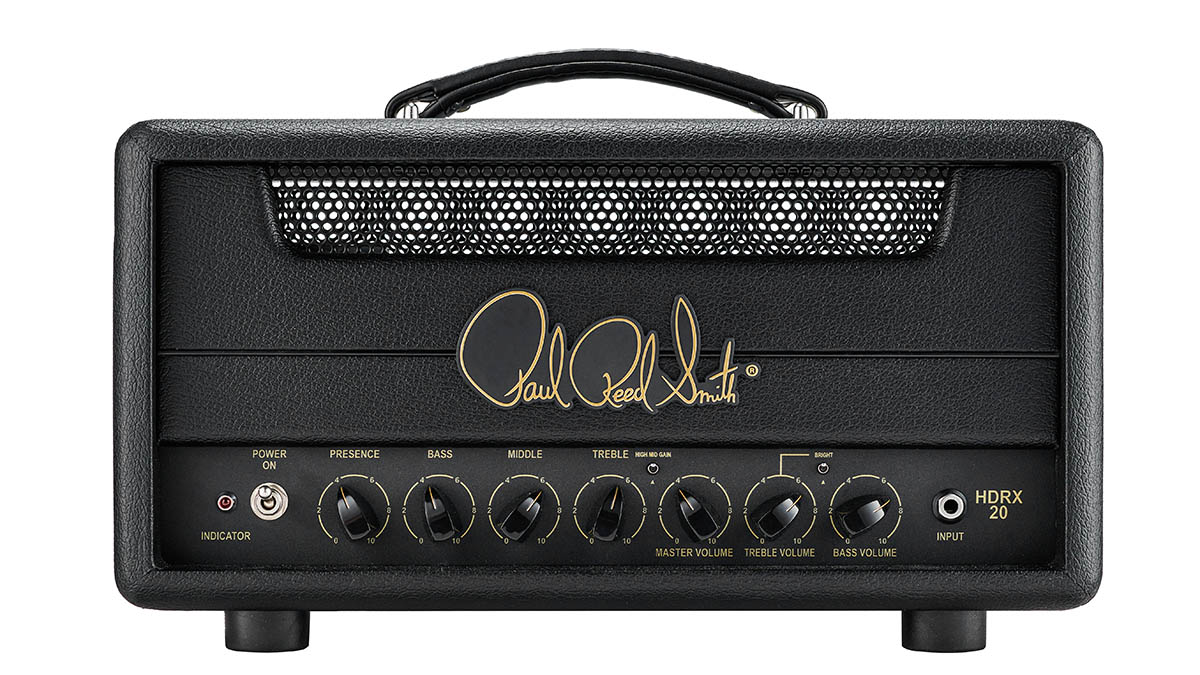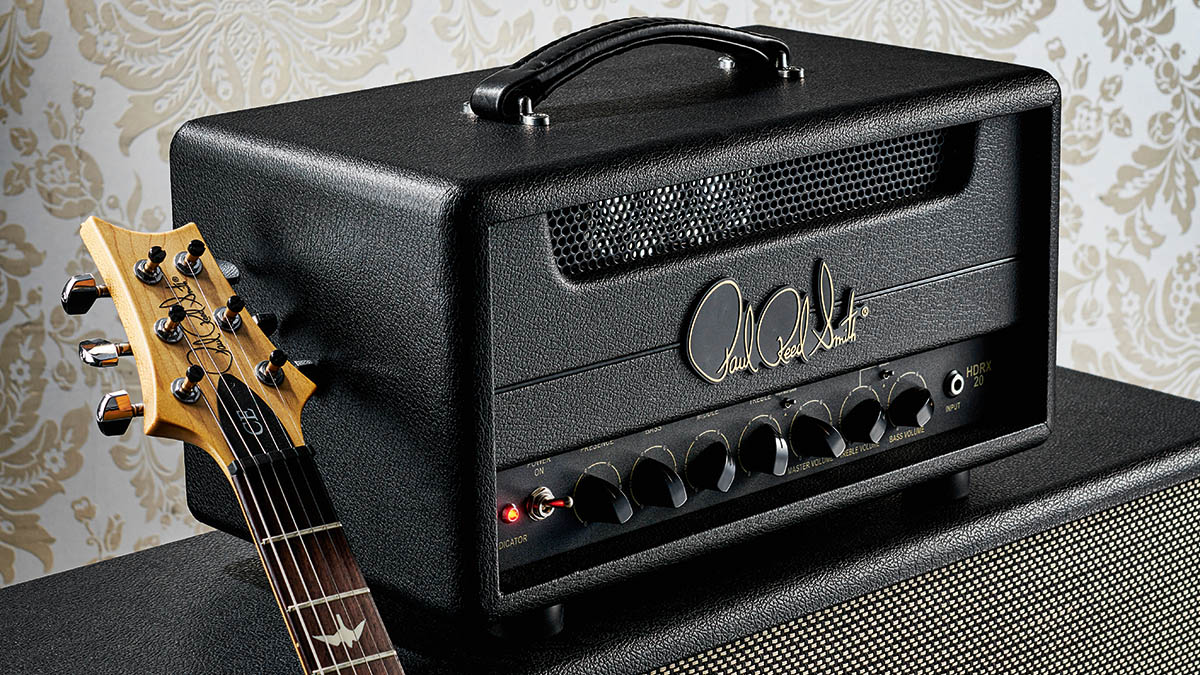Guitar World Verdict
Aimed at serious amateurs and pros looking for authentic JTM45 or ‘Plexi’-inspired tone in a modern, reliable and affordable package, this new HDRX 20 could turn out to be another winner for Paul Reed Smith.
Pros
- +
Looks, style and sonic integrity.
- +
Very affordable compared with bigger hand-wired HDRX amps. External bias helps keep the 5881 output tubes performing at their best.
Cons
- -
No standby switch.
- -
No footswitches or effects loops (but these aren’t part of the HDRX’s vintage ethos).
You can trust Guitar World
Following the so-called ‘British Invasion’ that swept the USA in the mid-’60s, many British bands and guitarists who followed the first wave were powered to stardom by the electric blues genre, including Jeff Beck, Eric Clapton, The Rolling Stones, Led Zeppelin, The Faces, Humble Pie and Fleetwood Mac – to name just a few from this remarkable epoch of creative change.
Ironically, one of the UK’s most influential exports was an American guitar slinger brought to England in 1966 by Animals bassist Chas Chandler, who rapidly soared to stratospheric fame after teaming up with Mitch Mitchell and Noel Redding. Jimi Hendrix’s guitars – and those of many other players – were powered by the Marshall 1959 100-watt Super Lead head, which was everywhere back then.
Ever since, many guitar amp builders have used it as an inspiration for their own designs, including Paul Reed Smith, who’s had significant success in recent years, from the 25th Anniversary head to the HXDA models and more recently the HDRX 100 and HDRX 50 heads.
These latest designs have the approval of the Hendrix estate and are based on Paul Reed Smith’s and amp guru Doug Sewell’s detailed examination of a vintage Super Lead kept at the Museum of Pop Culture in Seattle, which was purportedly used by Hendrix at Woodstock.
While those HDRX models are hand-wired and made in the USA, there’s now a new head called the HDRX 20, which is produced in PRS’s new factory in Indonesia, offering a more affordable and portable option.

The new HDRX 20 is a compact, all-tube head, broadly following the same layout of the larger models but with a few interesting changes. The case is a symphony in black, with neatly applied vinyl, perforated metal vents on the front and rear, black piping and a large PRS logo. Heavily radiused corners subtly evoke the original Marshall Super Lead’s styling.
Internally, the steel chassis supports a pair of decently large transformers, together with a choke – a transformer-like component used to filter AC mains ripple. Inside the chassis, most of the components live on a large high-quality printed circuit board, which is double-sided and through plated, including the front-panel controls and three JJ ECC803S preamp valves.
It’s perhaps more like a sweetened JTM45 than ‘Plexi’ to our ears but impressively vintage nonetheless, with a great dynamic response that lets you clean up just by backing off the pick or guitar volume control
There’s a separate PCB strip for the rear-panel speaker jacks and the HDRX 20’s bias circuit, with test points and an adjustment preset pot accessible on the rear panel. While the preamp valve bases are board-mounted, the power valves are bolted directly to the chassis and hand-wired. This keeps the main source of heat away from the circuit board and should improve the amp’s longterm reliability.
Unlike the larger HDRX 50 and 100 heads, which use EL34s, the HDRX 20’s power comes from a pair of Russian-made Tung-Sol 5881s. The Tung-Sol name is one of several old valve brands presently owned by New Sensor Corporation. However, the original 5881 was made by the famous Tung-Sol Lamp Works of Newark, New Jersey.
Tung-Sol valves were regarded as the best of the best, and the 5881 pentode was announced in 1950 as an improved alternative to the contemporary 6L6GA/B, with a ruggedised construction inside a shortened glass bottle, higher plate voltage rating and increased power. It was used by Fender on its 5F6-A Bassman 4x10, which was the inspiration for Marshall’s original JTM45 amplifier.
The HDRX 20’s control panel is a clever twist on that design, with two parallel preamp channels called Treble and Bass, using internal jumpering instead of the patch lead frequently used on old Marshalls, to allow both Normal and Bright channels to be heard simultaneously. There are separate volume controls for the two preamp channels, feeding treble, middle, bass and presence tone knobs.
There’s also a master volume, which the two larger HDRX amps don’t have, with two small toggle switches operating a bright function on the Treble channel and a High-Mid Gain boost, which apparently copies a cathode-follower component change on the Hendrix ‘Plexi’.
The simple rear-panel features include five speaker jacks, for connection to four-, eight- and 16-ohm cabinets, together with bias test points and a recessed adjustment pot. A screen-printed Hendrix signature and the Authentic Hendrix logo indicate the HDRX 20’s heritage. Overall, the HDRX 20 is a solid, no-frills head that’s built to last, with typical PRS good looks and styling.
Feel & Sounds
We tried out PRS’s HDRX 20 with our usual test guitars, including a Strat fitted with low-medium output Duncan Alnico Pro single coils, and a Les Paul loaded with a pair of old PAFs, with cabinets powered by Celestion’s Vintage 30 and the G12H-75 Creamback – the same speaker PRS use for its HDRX enclosures.
Once the amp has warmed up and the voltages stabilised, it’s impressively free of hiss and hum, thanks partly to a DC supply for the preamp valve heater filaments.
The two parallel preamp volume controls are best treated as the HDRX 20’s primary tone controls, with the other EQ knobs and switches serving to fine-tune the sound once you’re getting close. The Bright switch is useful for adding extra zing to midrange-heavy high-output pickups, while the High-Mid Gain switch adds a subtle lift to single coils, which helped our Strat get into the Hendrix tone ballpark.

The master volume adds another refinement, allowing you to turn the preamps up high and get a moderate crunch at polite volume levels, although the master needs to be at least halfway before it sounds properly good, with the same bright but not harsh treble and smooth mids you’d expect to hear from a good tweed Bassman or ‘Plexi’-inspired design.
It’s perhaps more like a sweetened JTM45 than ‘Plexi’ to our ears but impressively vintage nonetheless, with a great dynamic response that lets you clean up just by backing off the pick or guitar volume control.
With its medium-low gain channels, the HDRX 20 is a great platform for pedals of all types, but there’s no effects loop, so pedal users will need to place them between the guitar and the input jack, or use a loadbox with a loop or line out, between amplifier and speaker. PRS recommends the Koch LB120 II for the larger non-master volume HDRX 50 and HDRX 100 heads, although there are other suitable products available with varying features.
Verdict
Paul Reed Smith’s amp manufacturing fortunes continue apace, with impressive signature products for David Grissom and Mark Tremonti alongside the dual-channel Archon range, which easily covers practically any genre from country to metal.
The HDRX amplifiers, with their ‘Authentic Hendrix Touring Circuit’ design, accurately evoke vintage Super Lead tones and punch in a modern package that benefits from improved design and components – although in other ways the HDRX is just as uncompromising as its ancestors, with no effects loops, footswitchable functions or speaker emulated outputs.

Thankfully, technology has moved on since the late 1960s and today there are many outboard effects and loadboxes to take care of that, making the HDRX amps ideal as the core of a rig that can be as simple or complex as you need it to be.
Set alongside the larger EL34-powered heads of the range, the new HDRX 20 is still plenty loud enough for live gigs, with the advantage of easier portability and significantly improved affordability, thanks to offshore manufacturing.
Specs
- PRICE: $/£799
- ORIGIN: Indonesia
- TYPE: Tube preamp, tube power amp
- OUTPUT: 20W RMS
- TUBES: 3x JJ ECC803S, 2x Russian Tung-Sol 5881
- DIMENSIONS: 440 (w) x 230 (d) x 235mm (h)
- WEIGHT (kg/lb): 9/20
- CABINET: Plywood
- CHANNELS: 2, parallel, permanently on
- CONTROLS: Bass volume, treble volume, master volume, treble, mid, bass, presence, high mid gain switch, bright switch
- FOOTSWITCH: None
- ADDITIONAL FEATURES: External bias adjust points on rear panel
- OPTIONS: None
- RANGE OPTIONS: The USA-manufactured HDRX 100 head costs £2,999; the HDRX 50 head is £2,799. The matching closed-back Celestion Creamback-loaded cabinets sell at £849 for the 2x12 and £1,249 for the 4x12
- CONTACT: PRS Guitars
Nick Guppy was Guitarist magazine's amp guru for over 20 years. He built his first valve amplifier at the age of 12 and bought, sold and restored many more, with a particular interest in Vox, Selmer, Orange and tweed-era Fenders, alongside Riveras and Mark Series Boogies. When wielding a guitar instead of soldering iron, he enjoyed a diverse musical career playing all over the UK, including occasional stints with theatre groups, orchestras and big bands as well as power trios and tributes. He passed away suddenly in April 2024, leaving a legacy of amplifier wisdom behind him.
“The world’s most convenient all-tube amp head”: Steve Vai-backed firm Synergy has unveiled a tiny amp head that lets you swap in tones from some of the world’s biggest amp builders
“Modified connects us with a long-standing tradition of modifying Marshall amps that dates back to the 1970s”: Marshall unveils factory modded takes on the 1959 Plexi and JCM800 – tipping its cap to the amp wizards of rock’s golden era













